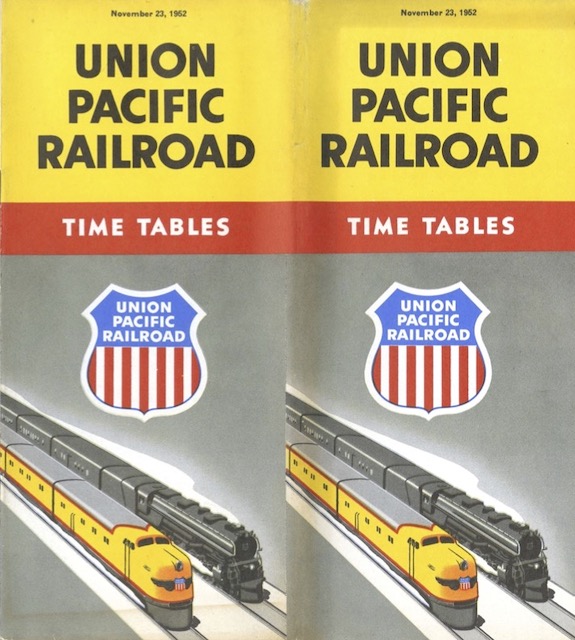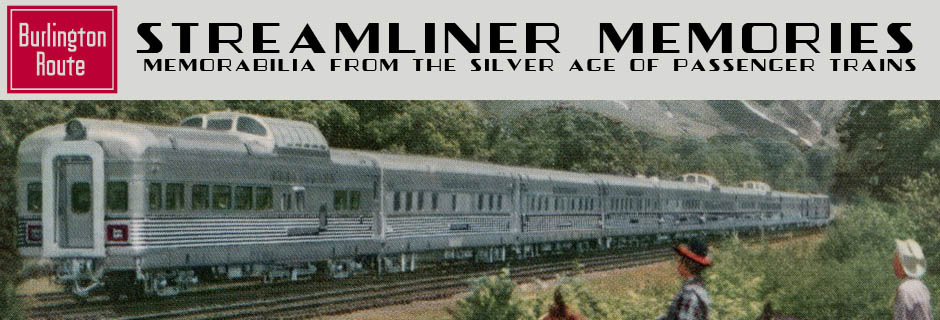This timetable came out just two months after the previous one, so there aren’t going to be a lot of changes in it. However, I want to point out the density of passenger trains between two modest-sized cities: Ogden (which had about 60,000 residents in 1952) and Salt Lake City (which had about 185,000 residents in 1952). Ogden, of course, was on the line of the first transcontinental railroad, but Salt Lake, 36 miles to the south, was not.
 Click image to download a 33.5-MB PDF of this timetable.
Click image to download a 33.5-MB PDF of this timetable.
Construction of the Los Angeles & Salt Lake Railroad, which eventually became a part of UP, put Salt Lake City on the mainline so that many trains served the Ogden-Salt Lake corridor. On one hand were trains from Salt Lake to the north or northwest, including the Butte Special, Idahoan, and Northwest Special. On the other hand were trains that went to Los Angeles via UP’s trunk line from Omaha to Ogden, including the City of Los Angeles, Los Angeles Limited, and City of St. Louis.
All of these trains plus a Mail & Express are shown on page 37, table 31, of this timetable, allowing for seven round trips a day between the two cities. In the summers, this was increased to eight by the Yellowstone Special. This timetable has three trains leaving before 8:00 am from Ogden to Salt Lake and three returning after 5:00 pm, plus four trains leaving before 9:00 am from Salt Lake to Ogden and four returning after 5:00 pm.
In other words, these could have served as commuter trains in either direction. Though UP was probably not eager to fill seats on its long-distance trains with short-distance travelers, if it truly wanted to discourage such use, it wouldn’t have included all of these trains in one timetable.
